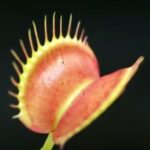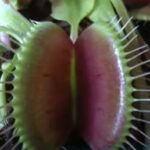As an Amazon Associate, this site earns commissions from qualifying purchases. For more details, click here.
Pitcher plants are growing in popularity due to their distinct appearance and unique way of capturing and eating bugs. Buying a nepenthes or sarracenia pitcher plant is easy enough. But where is the best place to grow them, outdoors or indoors? Does it really have an effect on the plants? Yes it does actually.
Pitcher plants can grow indoors and outdoors with 6-10 hours of sunlight. Keep soil constantly moist and the ideal temperature is 64-85 F. Indoor pitcher plants have to be fed weekly, but outdoor plants can catch insects on their own.
How to Grow Indoor Pitcher Plants
There are many types of pitcher plants, but the most common belong to the nepenthes or sarracenia variant. Between the two there are several subtypes you can choose from.
One of the benefits of growing pitcher plants indoors is you can control the environment. This is important if you have picky nepenthes for instance. Most of them adapt well to different environments but some are more sensitive to their habitat than others.
By growing pitcher plants indoors you can adjust the humidity, lighting etc. until it suits the plant. This plays a huge role in determining how long pitcher plants live. The following tips apply for nepenthes and sarracenia plants.
First you should check for instructions (if any) that came with your pitcher plant. Their basic requirements are similar but there might be some variations needed. Follow any guidelines that is provided with your pitcher plant.
Where to Place Pitcher Plants Indoors
Note: these plants are safe for pets, and in fact need protection from animals. Cats and dogs are known to eat pitcher plants so keep that in mind if you have pets. A high shelf will keep the plant safe from dogs. For cats you have to keep your pet occupied with other activities or toys. Before you grow pitcher plants in your house, plan its location especially if you have pets.
Indoor pitcher plants need light, water, soil and nutrition to live Therefore it is essential that you place the pitcher plant in the most appropriate location.
You can place pitcher plants anywhere indoors as long as it receives 6-10 hours of light. Set the plant on a windowsill if there is sunlight. Otherwise you can use artificial light and focus it on the plant.
If you are going to feed the pitcher plant you can put it anywhere in your house with light But if you want to give it access to insects, place it by an open window or door. The drawback is all kinds of bugs might get inside so manual feeding is better.
You can also grow nepenthes in a terrarium like this one from Yimorence. You have to provide sufficient light and water and keep the temperature around 65-85 F.
If you going to use a terrarium, you have to feed it since the plant is in an enclosed container. Most nepenthes adapt well to a terrarium but try to ma its environment as close to its natural habitat as possible.
Temperature and Humidity
Nepenthes pitcher plants requires at least 64 F (18 C), but some variants do not cope well with direct sunlight or when the temperature is over 90 F. So while these plants thrive in warm weather, you have to keep it in partial shade. Fortunately this is easy to control when the plant is indoors.
Sarracenia pitcher plants can grow in lower temperature. Some variants stay alive at 23 F (-5 C). Even so these plants prefer direct sunlight. This is why you should use a grow light if natural light is not enough.
Both nepenthes and sarracenia thrive in high humidity. Most variants prefer 60% humidity but the plant will be all right as long as it is around 50% or so. Lower humidity is acceptable in cool weather. As temperature increases, higher humidity is required.
You can grow pitcher plants in a greenhouse or terrarium. This is great for managing humidity but do make sure it does not overheat inside.
Natural and Artificial Lighting
Sarracenia needs at least 6 hours of direct sunlight the more the better. The plant prefers strong light to grow and anything less weakens it. You can place a sarracenia by a windowsill provided it is sunny enough. Use artificial light – T5 or T8 fluorescent or LED – if natural light is too weak.
Nepenthes flourishes in partial sunlight preferably 8 hours a day. It can handle direct sunlight provided it is not too hot. A combination of the two works well. We recommend EcoSmart Light Bulbs for pitcher plants. It is powerful without being too harsh on the leaves, plus it is works well with other indoor plants.
Some tips for lighting indoor pitcher plants:
- If your sarracenia looks weak, bring it outdoors. Sometimes grow lights or even sunlight from a windowsill is not enough.
- Nepenthes adapts better to indoor lights than sarracenia.
- You can use natural light or grow lights together.
- If your nepenthes is in a terrarium, make sure the grow lights are powerful enough.
What Soil is Best for Indoor Pitcher Plants?
Pitcher plants can only survive in poor soil such as equal parts perlite and peat moss. But there are other types of media you can use. Here are some suggestions and the ratios.
- Sphagnum moss and silica sand: 1:1, 2:1, 3:1 or 4:1
- Sphagnum moss and perlite: 1:1, 2:1, 3:1 or 4:1
- Peat moss and silica sand:1:1, 2:1, 3:1 or 4:1
- Peat moss and perlite:1:1, 2:1, 3:1 or 4:1
Check the recommended soil mixture that came with your plant. You can adjust the mix using any of the ratios above. Both nepenthes and sarracenia variants grow well with any of the potting media given here.
Pot size. Pitcher plants can adapt to whatever pot it is grown in. But for small variants, a 5 inch container will do nicely. For larger pitcher plants, go with a 7 or 10 inch pot.
How to Water Indoor Pitcher Plants. Pitcher plants should be watered regularly to keep the soil moist. The tray method does not work with these plants so water from the top.
Water the plant as often as necessary to keep the soil moist. This might mean twice a day during summer or once every two days during the cooler months. Check the soil and use that to determine watering frequency.
You should only use reverse osmosis, distilled or rainwater. The minerals in tap water are hazardous to these plants.
How to Feed Indoor Pitcher Plants
Indoor pitcher plants have to eat at least once a month. Feeding on a weekly basis leads to faster growth. These plants consume gnats, crickets, flies, mosquitoes, ants, fish flakes, mealworms and bloodworms.
Indoor pitcher plants are often manually fed because they have limited access to prey. If the plant is in a terrarium it definitely needs manual feeding.
But if the plant manages to catch prey even indoors, you do not have to give it food. Observe the plant. If it looks fine even with once or twice a month eating, then let it be. But you should give it food if the pitcher has been empty for a while.
Dormancy
Nepenthes do not require dormancy. You can keep it indoors in the same conditions all year round.
Sarracenia pitcher plants go dormant for up to 4 months. You can move the plant to the garage or shed (assuming it is not heated), or even put it in the fridge. But you have to let it go dormant until it reemerges in early spring.
Dormant sarracenia still require a bit of water to keep the soil moist. However the plant will not eat. Shedding of leaves is to be expected and you should trim any dead leaves off the plant.
How to Grow Outdoor Pitcher Plants
Cultivating pitcher plants outdoors is easy and needs little maintenance. However you do not have as much control over the environment.
Light. This is key to keeping pitcher plants alive so choose a good location. For sarracenia pitcher plants, find the sunniest location. For nepenthes, look for a partially shaded spot.
Temperature and Humidity. Nepenthes can handle high temperatures as long as it is under partial cover. Sarracenia pitcher plants will be fine up to 85-90 F. Anything higher and you have to move the plant under partial cover. High humidity is deal.
Soil and Water. The same as indoor pitcher plants. Use peat moss or sphagnum combined with silica sand or perlite. You can use a ratio of 1:1, 2:1, 3:3 or 4:1. Water the soil so it is always moist. Never let it dry out especially during summer.
Food. Outdoor pitcher plants can get food on their own. Check the pitcher and you should see the remains of insects. If there is none, move the pitcher plant to another location, and check also if it is sick.
Dormancy. Sarracenia plants will be fine outdoors during winter as they enter dormancy. Nepenthes will be all right as long as the temperature does not drop below 40 F (4 C). If you are in zone 8 a sarracenia plant can be left outsid, but move the nepenthes inside. Check your zone here.
Conclusion
So the bottom line is you can grow pitcher plants in your home or outside. Whether it is nepenthes or sarracenia, your plant should be fine as long as you care for it properly.

My fascination with carnivorous plants began many, many years ago with Venus Fly Traps. Now I am more than happy to impart what I know with other enthusiasts and those who are curious about meat eating plants.



